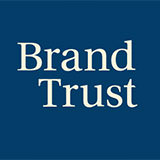
No matter how poor an economy is: around 8% can always be considered wealthy and luxury-oriented.
Luxury sells: How to guide a luxury brand into a successful future
Article
10. Juni 2011 ▪ Reading time: approx. 2:20 min.
The worldwide luxury industry is booming. Export figures of the classic luxury goods exporters among European countries (France, Italy, Switzerland, Germany) are soaring to unexpected heights. Company takeovers, such as the recent acquisition of Bulgari, are in full swing, and more lie ahead. Even state-owned luxury enterprises like Meissen are approaching unprecedented brand expansion in order to survive into the future.
All is well in the luxury market? Far from it. Especially when greed and insatiability regain the upper hand after a short period of depravation, ambitious young managers make the same classic mistakes. So here are a few theses to point out this potential for error and at the same time provide some food for thought.
Building a luxury brand takes much longer than you thought.
One of the biggest mistakes being made in the building or managing of a luxury brand is to underestimate the timing. Learning and decision-making cycles take longest in luxury consumption – not so much for monetary reasons (although saving up can also be a factor), but rather because it takes time to develop a sense of underlying quality, for many-faceted codes and contextual placement, as well as for connoisseurship of the brand, its statements and products.
Since luxury products are very often not necessary for survival, there is usually no pressure to buy. This is why building a luxury brand should be measured in decades rather than years. Business plans that aim to achieve too much in too short a time should be viewed with extreme caution.
A luxury brand attracts because it excludes.
In the context of luxury brand, we always hear the word "exclusive". It comes from the Latin "excludere", which means – obviously – to exclude. Luxury brands must exclude. Through their price, their availability, their product language, and their codes.
Luxury brands that disregard this principle out of greed for growth very quickly run the risk of becoming ordinary – and ordinariness is the greatest enemy of all brands.
Social Media is a taboo for luxury brands.
Luxury brands achieve desirability among other things by being rare. If you want to count, make yourself scarce. In order to function and achieve the desired price premium, a luxury brand cannot be easy to get or reach. Role models and idols live on their inapproachability. This nerve may never be dulled through ingratiation, too much closeness impedes the art of seduction.
From a sales standpoint, all luxury brands that were available in too many stores and shops have had to learn that lesson. Average prices were forced down – and the globally uniform brand world that is so important for a real luxury brand eroded. In consequence, the luxury houses drastically reduced their distribution and some became retailers themselves to keep their brand completely in their own hands.
This is why social media activities are taboo for real luxury brands. Luxury brands must seduce, not pursue. Chumming up to potential customers is best left to others.
Mature markets develop segments.
One important insight from our work is: Luxury sells. No matter how poor an economy is, about 8% of the population can be considered wealthy and luxury-oriented. In mega-economies like China or India (a total of 2.3 billion people), that adds up to 184 million luxury customers. These markets are just now beginning to divide and form a luxury segment. Super premium and premium segments as well as discount and value segments will form as a consequence.
Market segmentation always starts at the top and moves down. This places an additional economically relevant importance on luxury brands. With the art of addressing and satisfying not only needs, but life scarcities like wishes, dreams, desires, and hopes, they hone their target groups' sense of quality and help them to differentiate in their purchases, which in turn promotes added value and sustainability.
Other articles that might be interesting for you:
» Umsatzverhinderung – ein Produkt der Lufthansa (von Klaus-Dieter Koch)














